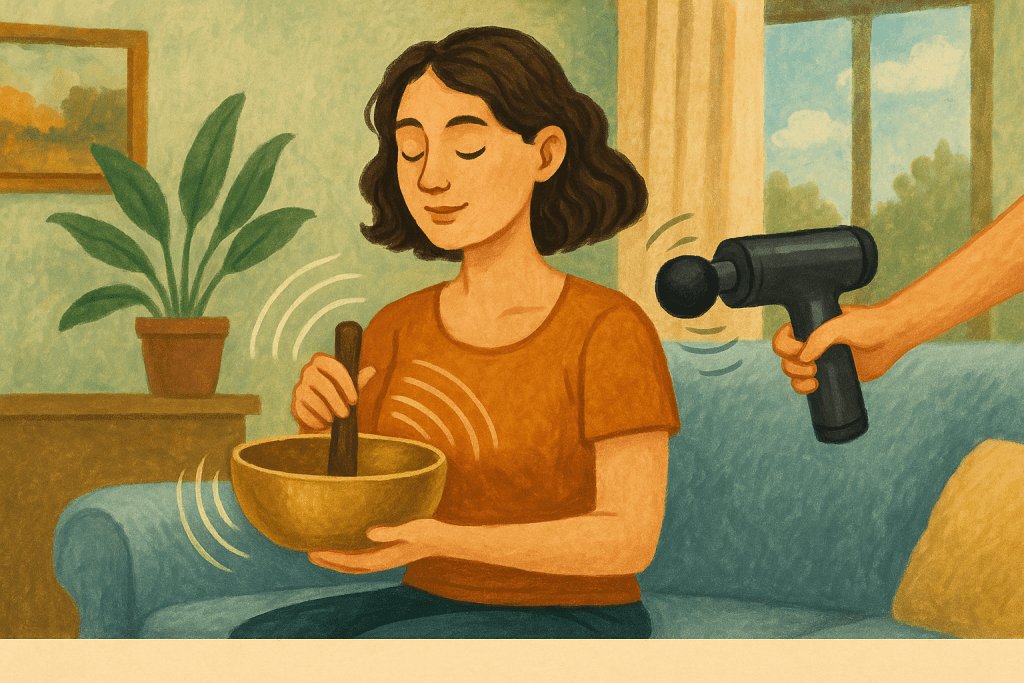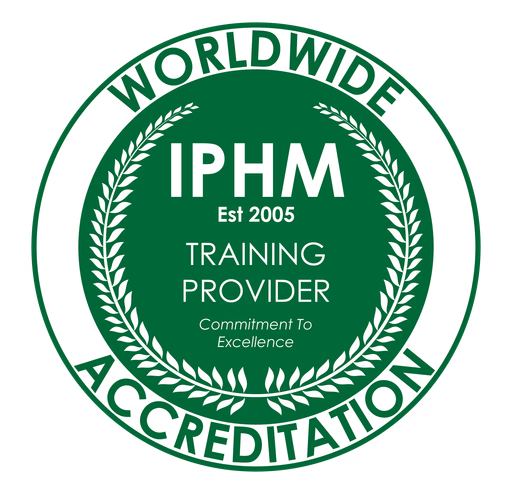
Introduction
Wellness trends are moving from expensive spas to the comfort of our own homes. One of the most fascinating practices gaining popularity is sound and vibration massage. But here’s the question can you really do it yourself at home? The short answer is yes, and with the right approach, it can be deeply rewarding.
Understanding Sound and Vibration Massage
The Concept of Sound Therapy
Sound therapy uses tones, frequencies, and rhythms to influence the mind and body. From ancient chants to modern binaural beats, sound has always been used as a form of healing.
The Science of Vibration Healing
Every cell in your body vibrates at a natural frequency. When exposed to certain sound frequencies, your body can “tune” itself back into balance, much like adjusting an out-of-tune guitar.
Historical and Cultural Roots
From Tibetan singing bowls to Aboriginal didgeridoos, cultures worldwide have used sound as medicine for centuries. What we call “sound and vibration massage” today is a modern take on these ancient traditions.
Benefits of Sound and Vibration Massage
Stress Reduction and Relaxation
Gentle vibrations calm the nervous system, lowering stress hormones.
Improved Sleep Quality
Many report falling into deep, restorative sleep after a sound session.
Enhanced Mental Clarity
Sound frequencies help “declutter” the mind, aiding focus and creativity.
Physical Tension Release
Like a massage therapist working on tight muscles, vibrations soothe stiffness and promote circulation.
Support for Emotional Balance
Sound has the power to shift moods, helping to release stored emotions.
Physiological Effects of Sound and Vibration Massage
Vibration therapy and massage therapy offer a host of physiological benefits for the human body, making them popular choices for both wellness enthusiasts and professional athletes. When you apply vibration whether through a massage gun, vibrating massager, or sound waves your muscles and soft tissues experience a gentle up and down movement. This motion stimulates muscle fibres, helping to loosen tight muscles, reduce muscle pain, and ease muscle cramps. The result? Your body feels more relaxed, flexible, and ready to move.
One of the standout advantages of vibration massage is its ability to boost blood circulation. As the vibrations penetrate deep into the tissues, they encourage blood flow, bringing fresh oxygen and nutrients to the muscles while helping to flush out waste products. This process not only supports healing and the production of new blood cells but also helps reduce inflammation and muscle soreness especially after intense exercise or physical activity. That’s why many professional athletes and sports physiotherapists rely on massage guns and percussion massage techniques to enhance performance and speed up recovery.
But the benefits don’t stop at the muscles. Vibration therapy also has a calming effect on the nervous system, helping to reduce stress and anxiety. The gentle stimulation from sound waves and vibrations can promote relaxation, lower tension, and support overall mental wellbeing. Clinical research, including studies published in Br J Sports Med and Sports Phys Ther, highlights the effectiveness of vibration massage in managing chronic pain, improving tissue function, and even increasing the formation of more capillaries for better blood flow.
Whether you’re dealing with chronic pain, muscle soreness, or just looking to relax after a long day, vibration massage offers many benefits. It’s a safe and effective technique that can be used alongside other therapies to support your health and healing journey.
Tools and Instruments Used
Singing Bowls
Tibetan or crystal bowls produce deep, resonant tones ideal for self-practice.
Tuning Forks
These deliver targeted vibration when placed near energy points.
Gongs and Chimes
Larger instruments for immersive sound baths, often used in group settings.
Modern Vibration Devices
From handheld massagers to sound chairs, technology makes at-home practice easier.
DIY Alternatives
Even humming or clapping can stimulate vibration it doesn’t have to be complicated.
Preparing Your Space at Home
Your environment matters as much as the instruments. Choose a quiet, comfortable spot. Dim the lights, light a candle, or use essential oils to set the mood. Turn off notifications and make it a sacred moment.
How to Perform Sound and Vibration Massage at Home
- Set Your Intention – Decide what you want (relaxation, focus, release).
- Breathe Deeply – A few rounds of slow breathing help prepare your body.
- Use Instruments Mindfully – Strike the singing bowl or tuning fork gently. Let the sound fade naturally.
- Add Vibration Tools – If you have a massager or sound device, apply it slowly to areas of tension.
When using vibration tools, gentle friction against the skin helps generate heat, promotes muscle relaxation, and stimulates blood flow. This massage technique can also increase tissue temperature and cellular activity, aiding in recovery from muscle tension. - Close with Gratitude – End by sitting in silence, letting your body absorb the effects.
Tip: Vibration massage can be especially useful as a pre event routine to prepare muscles, increase flexibility, and enhance performance before physical activity.
Combining Sound Massage with Other Practices
Pairing sound therapy with meditation or yoga deepens relaxation. Journaling afterward can also help process emotions that surface during the session.
Safety and Precautions
Sound and vibration massage is safe for most people, but some individuals may experience adverse effects such as mild soreness or discomfort. Patients with epilepsy, heart conditions, or who are pregnant should seek medical advice before starting any new treatment. It is important to tailor the approach to each patient’s needs and health status. Avoid very loud instruments close to the ears.
Professional vs. DIY Sessions
A professional brings expertise and powerful instruments, offering a richer experience. Professionals are trained in the clinical application of vibration massage, ensuring safe and effective treatment tailored to individual needs. However, DIY practice at home is affordable, flexible, and still very effective. Many people do both.
Common Mistakes to Avoid
- Hitting instruments too hard.
- Expecting one session to “fix” everything.
- Forgetting to stay comfortable and relaxed.
How Often Should You Practice?
Beginners can start with 10–15 minutes, two to three times a week. Over time, daily short sessions bring even greater benefits. Consistency is key.
Enhancing the Experience
Want to take it up a notch? Use headphones with recorded soundscapes, blend in rain or ocean sounds, or create a small ritual around your practice, like lighting incense before starting.
Real-Life Testimonials and Experiences
Many home practitioners share that sound massage became their “daily reset.” Some say it helped them through insomnia, while others claim it boosted their creativity at work. The best part? Everyone’s experience is unique.
Conclusion
So, can you do sound and vibration massage at home? Absolutely. With the right tools, mindset, and consistency, you can create your own healing sanctuary without ever leaving the house. Whether you’re aiming for stress relief, better sleep, or deeper self-connection, sound and vibration massage is a practice worth exploring.
FAQs
No. While high-quality bowls are wonderful, even simple tools like humming, clapping, or affordable tuning forks can be effective.
Anywhere from 10 to 30 minutes works well, depending on your comfort and schedule.
Yes, with gentle volumes and vibrations, it can be calming for all ages.
Music entertains, while sound therapy uses specific frequencies designed to heal and balance the body.




